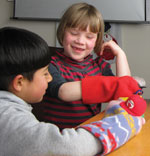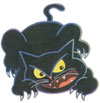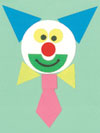| ACKNOWLEDGEMENTS |
 |
The Project
directors acknowledge the vital support and contributions of many people
to this report, including:
• the very dedicated staff of the Educational Assessment Research Unit
• Heleen Visser, Hadyn Green and other staff members of the Ministry of Education
• members of the Project’s National Advisory Committee
• members of the Project’s Reading and Speaking Advisory Panel
• principals and children of the schools where tasks were trialled
• principals, staff and Board of Trustee members of the 246 schools included in the 2008 sample
• the 2867 children who participated in the assessments and their parents
• the 96 teachers who administered the assessments to the children
• the 43 senior tertiary students who assisted with the marking process
• the 192 teachers who assisted with the marking of tasks early in 2009.
• the people and organisations who granted permission for the publication of their work in this report,
to illustrate our assessment resources. [see Resource Acknowledgments for full details and rights]
OVERVIEW
 |
Both year 4 and year 8 students showed greater skill in reading words accurately (decoding) than in interpreting and acting on the messages they were reading (comprehension). Performance was quite weak in scanning for information. Year 8 students, on average, performed at a substantially higher level than year 4 students, but there was a quite large overlap in performance. Performance differences between year 4 and year 8 students were generally smaller on speaking than reading tasks.
Performance in reading did not improve or decline between 2004 and 2008, but trends since 1996 show a quite substantial improvement overall for year 4 students and a small improvement for year 8 students. In both cases the improvement occurred mainly between 1996 and 2000, with little change since then.
Performance in speaking did not improve or decline between 2004 and 2008. Over the 12 years since 1996, the accumulated evidence suggests a small improvement for year 4 students and a small decline for year 8 students.
The relative popularity of reading and speaking compared to other school subjects has not changed over the past 12 years, but reading has become a less popular activity outside of school, especially for year 8 students. Reading books (both fiction and non-fiction) has declined markedly in popularity compared to reading magazines and comics.
Girls in both year 4 and year 8 typically performed a little better than boys on both reading and speaking tasks, but with a huge overlap in performance. On average, Pakeha students scored moderately higher than Mäori students in both reading and speaking, but the performance gap in reading has narrowed a little over the last eight years. At year 4 level, Pasifika students scored moderately lower than Pakeha students in both reading and speaking, a disparity which has decreased a little over the past eight years, but the corresponding differences for year 8 students are quite large and not decreasing. |
| The NEMP Approach to National Monitoring |
 |
New Zealand’s National Education Monitoring Project commenced in 1993, with the task of assessing and reporting on the achievement of New Zealand primary school children in all areas of the school curriculum. Children are assessed at two class levels: year 4 (halfway through primary education) and year 8 (at the end of primary education). Different curriculum areas and skills are assessed each year, over a four-year cycle. The main goal of national monitoring is to provide detailed information about what children know, think and can do, so that patterns of performance can be recognised, successes celebrated, and desirable changes to educational practices and resources identified and implemented.
Each year, random samples of children are selected nationally, then assessed in their own schools by teachers specially seconded and trained for this work.
Task instructions are given orally by teachers, through video presentations, on laptop computers, or in writing. Many of the assessment tasks involve the children in the use of equipment and materials. Their responses are presented orally, by demonstration, in writing, in computer files, or through submission of other physical products. Many of the responses are recorded on videotape for subsequent analysis.
The use of many tasks with both year 4 and year 8 students allows comparisons of the performance of years 4 and 8 students in 2008. Because about 45% of the tasks have been used twice, in 2004 and again in 2008, trends in performance across the four-year period can also be analysed and reported.
| Assessing Reading and Speaking |
 |
In 2008, the second year of the fourth cycle of national monitoring, three areas were assessed: music, aspects of technology, and reading and speaking. This report presents details and results of the assessments of reading and speaking.
Frameworks for reading and speaking assessment are presented in Chapter 2. These frameworks highlight the importance of constructing and communicating meaning for a variety of purposes, and indicate how particular understandings, insights, skills, processes and motivational factors contribute to effectiveness in reading and speaking.
Most students responded with considerable enthusiasm to tasks involving hands-on experimentation, as individuals or as teams. Their enthusiasm for tasks exploring knowledge and understanding of scientific phenomena and concepts was lower on average, but varied considerably depending on the particular task. |
|
| Oral Reading |
 |
Chapter 3 examines achievement in oral reading, with the main emphasis on decoding of words rather than comprehension. Six of the tasks related to reading in English. Averaged across 76 components of these tasks, 22% more year 8 than year 4 students succeeded well. This indicates very substantial progress in oral reading between year 4 and year 8.
|
|
Averaged across 48 components in three trend tasks, 2% more year 4 students succeeded in 2008 than in 2004. One of the three tasks involved identifying the number of syllables in 25 words. On these words, 4% more students correctly identified the number of syllables in 2008 than in 2004. On the other two trend tasks, involving oral reading and comprehension aspects, students performed comparably in 2004 and 2008. Similar analyses were completed for the year 8 students. Averaged across the 48 components of the same three tasks, on average, 1% more year 8 students succeeded in 2008 than in 2004. This time, the 1% advantage was seen in both the syllables task and the other two trend tasks.
|
| One task involved reading of three short books in Mäori orally and answering comprehension questions. Averaged across 12 task components, 13% more year 8 than year 4 students read successfully in Mäori. There was no change in average performance on the task components between 2004 and 2008, for year 4 or year 8 students. |
| Reading Comprehension |
|
 |
Chapter 4 features silent reading with the focus on reading comprehension.
Year 8 students demonstrated consistently higher levels of performance than year 4 students. Averaged across 177 components of 19 tasks, 20% more year 8 than year 4 students succeeded with the task components. Many of the students (including substantial proportions of year 8 students) did not appear to be efficient at scanning for information.
|
|
| Averaged across the 74 components of the seven trend tasks given to year 4 students, 2% fewer year 4 students succeeded with the task components in 2008 than in 2004. This is a small to marginal decline in performance. For year 8 students, with 86 components of nine trend tasks included, on average there was no change in performance between 2004 and 2008. |
| Oral Descriptions |
 |
|
Chapter 5 presents the results for 11 tasks that involved students in giving oral descriptions. The performances of year 4 and year 8 students were compared on 65 task components. On average, 14% more year 8 than year 4 students succeeded on these components. Most students were able to make a good start on tasks and to present some relevant aspects in their descriptions. What distinguished the better performers was their attention to detail and giving their information in a coherent, logically ordered way.
Changes in performance between 2004 and 2008 could be examined on three trend tasks. Averaged across the 29 components of these tasks, there was no change in the performance of year 4 students between 2004 and 2008, but 1% more year 8 students succeeded in 2008 than in 2004.
|
| Oral Presentations |
 |
Chapter 6 included 14 tasks that involved students in making oral presentations for various purposes. The performances of year 4 and year 8 students were compared on 43 components of 11 tasks. On average, 12.5% more year 8 than year 4 students succeeded on these components. In general, year 4 students performed almost as well as year 8 students on task components related to enthusiastic involvement and expressiveness, but markedly less well on task components that required careful coordination between the team members or precision of ideas.
Changes in performance between 2004 and 2008 were examined on six trend tasks for year 4 students and seven trend tasks for year 8 students. Averaged across 23 components of the year 4 trend tasks, there was no change in performance between 2004 and 2008. For year 8 students the seven trend tasks included 28 components. On average, 2% more year 8 students succeeded with these components in 2008 than in 2004. |
|
| Survey |
 |
Chapter 7 presents the results of the reading and speaking surveys. These sought information from students about their involvement in reading and speaking activities, in school and beyond, and about their enjoyment of these activities.
Reading was fourth in popularity among 14 school subjects for year 4 students and sixth for year 8 students. These placings are essentially unchanged since 1996. The two favourite reading activities in school at both year levels were silent reading and reading with a buddy or partner.
Year 4 students appeared to think about reading as a technical task, requiring learning hard words and concentrating hard, whereas year 8 students placed greatest emphasis on enjoying reading and reading a lot.
More than 75% of year 4 and year 8 students were positive about reading at school, their own competence in reading, their parents’ views about their competence in reading, looking at books in a bookshop, going to a library, having their teacher read a story out loud and talking to a group in their class.
Reading was a high-preference leisure activity for only about 20% of the students (down from 34% for year 4 students and 30% for year 8 students in 2000). About 80% of year 4 students were positive about reading in their own time (not in school), but this dropped to 59% of year 8 students (down from 77% in 1996). Fiction books and comics were equally popular reading for year 4 students, closely followed by magazines.
For year 8 students, magazines were most popular, followed by fiction books and comics, then non-fiction books. In 1996, fiction books were clearly most popular for students in both year levels.
There were some other noteworthy changes from 1996 to 2008:
• 16% fewer year 4 and year 8 students were very positive about their teacher reading a story aloud;
• 15% fewer year 4 and 19% fewer year 8 students were very positive about getting a book for a present;
• 19% fewer year 8 students were very positive about looking at books in a bookshop, and 14% fewer about going to a library;
• the percentage of students who were very positive about how good they were at reading increased by 12% for year 4 and 11% for year 8.
|
| Performance of Subgroups |
 |
Chapter 8 reports the results of analyses that compared the task performance and survey responses of different demographic subgroups.
School type (full primary school, intermediate school, or year 7–13 high school), school size, community size and geographic zone did not seem to be important factors predicting achievement on the reading and speaking tasks. The same was true for the 2004, 2000 and 1996 assessments. However, for year 4 students there were statistically significant differences in the performance of students from low, medium and high decile schools on 92% of the reading tasks (compared to 88% in 2004 and 2000, and 71% in 1996), and 78% of the speaking tasks (cf. 90% in 2004, 87% in 2000 and 75% in 1996). There were also differences for year 8 students on 77% of the reading tasks (which compares with 87% in 2004, 58% in 2000 and 93% in 1996), and 84% of the speaking tasks (which compares with 86% in 2004, 56% in 2000 and 67% in 1996).
For the comparisons of boys with girls, Pakeha with Mäori, Pakeha with Pasifika students, and students for whom the predominant language at home was English with those for whom it was not, effect sizes were used. Effect size is the difference in mean (average) performance of the two groups, divided by the pooled standard deviation of the scores on the particular task. For this summary, these effect sizes were averaged across tasks.
Girls averaged higher than boys on reading tasks, with a small mean effect size of 0.17 for year 4 students (compared to 0.22 in 2004 and 0.25 in 2000) and a small to moderate mean effect size of 0.21 for year 8 students (compared to 0.15 in 2004 and 0.10 in 2000). On speaking tasks, the advantage of girls over boys was small to moderate, with mean effect sizes of 0.20 for year 4 students (compared to 0.15 in 2004 and 0.24 in 2000) and 0.17 for year 8 students (compared to 0.17 in 2004 and 0.06 in 2000). These are small changes in disparity. The reading and speaking survey results showed that, both at year 4 and year 8, girls were markedly more enthusiastic about reading and speaking than boys.
|
 |
|
Pakeha students averaged higher than Mäori students on the tasks involving reading in English, with a moderate to large mean effect size of 0.41 for year 4 students (compared to 0.42 in 2004 and 0.63 in 2000) and a moderate effect size of 0.28 for year 8 students (compared to 0.37 in 2004 and 0.35 in 2000). This indicates that a substantial reduction in disparity for year 4 students has been maintained and there is now a small decrease in disparity for year 8 students. As in earlier assessments, year 8 Mäori students performed substantially better than Pakeha students on reading in Mäori. Pakeha students scored higher than Mäori students on speaking tasks, with moderate mean effect sizes of 0.34 for year 4 students (compared to 0.29 in 2004 and 0.41 in 2000) and 0.36 for year 8 students (compared to 0.34 in 2004 and 0.35 in 2000). This indicates little change in disparity at either year level. The reading and speaking survey results showed that year 8 Pakeha students were markedly more enthusiastic about reading than year 8 Mäori students.
|
Pakeha students averaged higher than Pasifika students on the tasks involving reading in English, with a moderate to large mean effect size of 0.44 for year 4 students (compared to 0.34 in 2004 and 0.64 in 2000) and a large mean effect size of 0.61 for year 8 students (compared to 0.47 in 2004 and 0.60 in 2000). This indicates some reduction in disparity over eight years for year 4 students, with little change over the same period for year 8 students. As in the previous two assessments, Pasifika students averaged substantially higher than Pakeha students on tasks involving reading in Mäori. Pakeha students averaged higher than Pasifika students on speaking tasks, with large mean effect sizes of 0.48 for year 4 students (compared to 0.52 in 2004 and 0.77 in 2000) and 0.63 for year 8 students (compared to 0.45 in 2004 and 0.47 in 2000). Disparity has reduced for year 4 students but increased for year 8 students.
Compared to students for whom the predominant language spoken at home was not English, students for whom the predominant language at home was English scored higher at both year levels on tasks involving reading and speaking in English. For reading in English, there was a moderate mean effect size of 0.30 for year 4 students (compared to 0.29 in 2004) and a moderate mean effect size of 0.28 for year 8 students (compared to 0.18 in 2004). On speaking tasks, there was a moderate mean effect size of 0.30 for year 4 students (compared to 0.28 in 2004) and a moderate mean effect size of 0.33 for year 8 students (compared to 0.21 in 2004). As in the 2004 assessments, students for whom the predominant language at home was not English scored higher at both year levels on tasks involving reading in Mäori. No corresponding effect sizes from 2000 are available for any of these comparisons. |
| Overall Trends in Reading Results |
 |
Considering all of the English reading trend tasks in chapters 3 and 4, it is appropriate to conclude that over the four years between 2004 and 2008 average reading performance did not improve or decline, for either year 4 or year 8 students. For year 4 students, this no-change result follows a substantial gain of 12% between 1996 and 2000, and a smaller gain of 2% between 2000 and 2004, suggesting overall a substantial improvement between 1996 and 2008. For year 8 students, the current no-change result follows a small gain of 4% between 1996 and 2000, and no change between 2000 and 2004, suggesting overall a small improvement between 1996 and 2008.
|
|
|
| Overall Trends in Speaking Results |
 |
Looking at all of the speaking trend tasks in chapters 5 and 6, there is no evidence of change in speaking performance for year 4 students between 2004 and 2008. This result follows a small gain of 1.5% between 1996 and 2000, and a similar gain between 2000 and 2004. For year 8 students, the average gain between 2004 and 2008 is 1%, which was preceded by a loss of 3.5% between 1996 and 2004 and a further loss of 1.5% between 2000 and 2004. Overall, the picture is of a small improvement for year 4 students between 1996 and 2008, but a small decline for year 8 students over the same time period.
|
|
|





